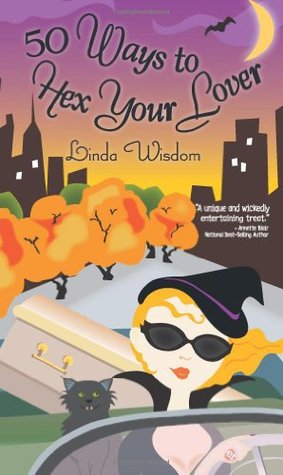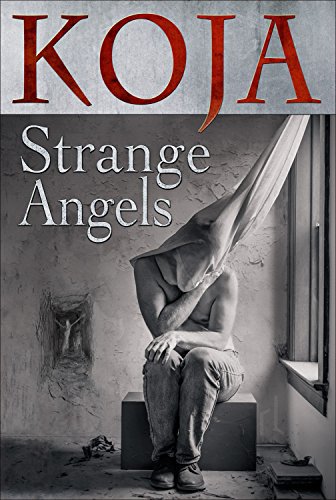
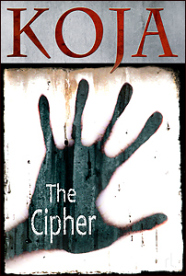 Book cover illustration
Book cover illustration 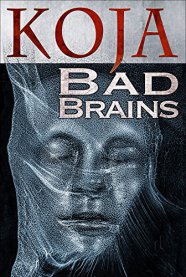

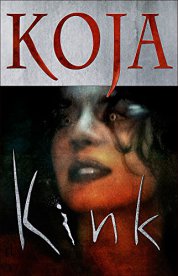
The Cipher, Kathe Koja, 1991, 2012.
Bad Brains, Kathe Koja, 1992.
Skin, Kathe Koja, 1993.
Strange Angels, Kathe Koja,
Kink, Kathe Koja, 1996.
The Early Novels of Kathe Koja: Strange Angels.
Strange Angels, Koja’s fourth novel, is something of a transitional novel, and the last of her early novels where characters go on a journey of transformation and do not emerge from the fire unscathed. Madness or death is the price paid for their obsessive quests.
Our hero is Grant Cusso. He’s another non-producing artist like poet Nicholas in The Cipher or painter Austen in Bad Brains. Grant photographs plants, but the novel opens with him not working, depressed, and living with art therapist Johnna. (Yes, this novel was published the same year as Koja’s “A Disquieting Muse”, another story featuring an art therapist.)
Grant’s quest begins when he sees a patient’s artwork that Johnna brings home. The artist is Robin, a schizophrenic. Johnna protests Grant even looking at the artwork and says it’s a violation of patient-therapist confidentiality. Thus, like the Funhole showing up in the closet of an apartment building in The Cipher or Austen’s brain damage and visions after stumbling in a convenience store parking lot, the beginning of Grant’s obsession seem accidental.
However, we find out later that Johnna seems to have deliberately exposed him to Robin’s work to get Grant out of his funk and to get Grant to take an interest in her work.
The plan works all too well. Grant becomes obsessed with Robin’s work and meeting Robin. He eventually connives to get Robin’s address and meet him in person. Johnna; Robin’s doctor; Maryann, the woman running the group home where Robin lives, and Alison, Robin’s sister, are not pleased. When Grant tells them he intends to let Robin live with him, to care for him, to aid Robin in his art, they tell Grant he has no idea what he’s dealing with, that they care or, in Alison’s case, used to care for Grant. But they know they can’t cure him. Schizophrenia, they tell Grant, is not a process that can be cured.
The early novels of Koja are full of triangles especially if you consider obsessions and art to be one apex of the triangle. Kink, Koja’s novel after this, is quite explicitly built around that central idea of the push-pull tensions of the “romantic” triangle. Michael-Bibi-Tess in Skin are a traditional triangle, but there is also the triangle of Bibi’s body modification-Bibi-Tess.
The first triangle here is Grant-Johnna-Robin, and Grant’s obsession with Robin destroys his relationship with Johnna, and she moves out.
From that point, the novel develops the same claustrophobic, hermetically-sealed air as that apartment with the Funhole in The Cipher and the road trip of Bad Brains. The story seldom, for the middle part, leaves Grant’s apartment. Another sort of triangle is formed with art-Robin-Grant. Grant undertakes a program of shaking up their routine to help Robin in his recovery and art.
But Robin has strange fits. His production flags. Grant even turns to churchgoing to shake things up, to get him and Robin out of their rut.
There they meet Saskia, another schizophrenic and also a former resident of Clearwater Hospital like Robin. Another triangle develops with Saskia-Robin-Grant, and Grant feels himself locked out of their strange universe of crazy talk, the “confraternity of the mad”.
Things start to get out of control, and Grant begins to doubt the wisdom of his quest, that all those warnings given him were right. But he has promised Robin he will not be returned to a hospital.
The final part of the novel has one last burst of creativity from the weakening, strangely sick Robin. Saskia eggs Robin on to realize her vision:
“He’s the bridge, you know? The bridge home, he can show me, he can take me,” take her where, where? Where she needed to be, to go, to exist finally and without anger: “Where my kind of thinking makes sense,”
Thus, another triangle emerges: Saskia and Robinand what they seek.
Koja often uses the image and metaphor of angels in her early work, and, given its title, this novel is full of them. “Angela” is a papier-mâché figure Robin wears about his neck for most of the novel. Talk begins to turn to another angel towards the end, the angel not usually mentioned in those cheery guides to angel books so popular in the 1990s:
“It’s the Muslim aspect of the Judeo-Christian angel Raphael,” she said, as if she were reciting out of a book; maybe she was. What book? “His body is all covered with eyes,” and now she smiled a little, now it was like something she had seen herself and maybe that was true, too, who knew? “And every time one blinks, a creature dies.”
“What kind of creature?” Grant said. “A person, or what? An animal?”
Shrugging, as if it were not her problem. “I don’t know. A creature, is all. Somewhere in the world a creature dies when Azrael blinks. Every time he blinks—”
and Robin suddenly sitting up, bolt up, straight up as if his back had been in the instant broken in place: paper and pencil tumbling, eyes wide and voice loud and dry, prayer, curse, incantation: “All his eyes are blinking, all his eyes are blinking now”
and Saskia frozen, an animal in the light of his voice
and the plastic jar fallen like a brick from Grant’s hand
“Blinking,” Robin said, “on and off,” and fully conscious, looking at them, a mild smile and from that smiling mouth a sudden gush of fluid, colorless and huge, arterial and enormous tumbling profligate to the floor
When Robin goes into a room to enter an almost catatonic state, Robin has “the hot nourished smile of Azrael, smiling and staring and blinking his thousand eyes.”
But there are other angels here too. Grant begins to reconsider his arrogance at thinking he could do what everyone else has been unable to, save Robin:
…even he could see things were breaking down, falling in, falling on them all like ordnance from a clear deadly sky, they were all falling together: like Lucifer, the morning star, the angel, the prince of birds, like a star’s trajectory, like the lines on a medical chart
And there is Saskia, another strange angel, a woman Grant is strangely attracted too:
Saskia was laughing too, flat rising giggle behind her hand on which a tiny scrap of macaroni had dried, head back and one of the twists or braids of hair had come loose and now lay against her neck and cheek, dirty blonde with real dirt, who knew what she would look like clean? Not prettier, maybe, grime might be her glamour, a matte protective layer to heal by covering the lifelong evidence of her illness, her excesses, intended, self-inflicted or not: or contrariwise she might be more beautiful, Botticelli bitch scraped pink and clean and long damp billowings of hair around her face, down her back, across her breasts
Saskia and Grant do eventually have sex but only once, and Saskia does it to give permission to Robin to have sex with her. It reinforces Grant’s isolation in the houses of the mad, houses because now the setting of Grant’s apartment is shared with Saskia’s house with its garbage strewn lawn somewhat reminiscent of the garbage art in Koja’s later “Remnants”.
Grant has lost unique his link to Robin because he is a tourist here:
How boring he must seem to her, little linear man with his linear mind and everything the way it ought to be, no surprises, no terrors, no alarms in the night; no fracturing beauty, no pain. Nothing like that at all because all that was Robin’s province and hers as well, the land of the schizophrenic, the undifferentiated landscape as alien as any moon through which he could walk, could visit, could learn the landmarks and the signs and maybe even be allowed to stay awhile; but could never live, could never after any amount of time or suffering or brute effort become a native, or even pass for one.
The land of the primitive and the crazy does not provide Grant the transformation he wants. He is a caretaker for the mad.
The novel has only one bit, towards the end, that may be regarded as fantastic, but there is a feeling of weird throughout the novel.
It begins with an afternoon Robin and Grant spend on the beach. There is an odd element of the possibly erotic when Robin asks Grant to put sunscreen on him, the first time Grant has touched the naked skin of a man. Robin reveals he once had a male lover.
Happily, Koja doesn’t go with unconvincing sex between Robin and Grant, but the weird vibe persists part of the genuine, if misguided, love Grant feels for Robin. Saskia’s present ramps up the weird, erotic tone of the novel.
Saskia’s and Robin’s talk of some unarticulated, at least to normie Grant, future apotheosis adds to the disquieting, unearthly tone.
But the novel’s climax, what Grant sees when Robin dies, provides the clearest intrusion of mystery into the world:
… then a noise, a thrum, a hum, a sound like an appliance left on too long, a burning hum. a sound like wires singing, like the sound at the edge of your sense of hearing, the sound only animals can hear
coming from Robin’s open mouth
a sound without noise, higher, stretching the edge of possibility; his eyes are open but it is plain he sees nothing; his whole body now shudders to the beat of his heart. His hand in Grant’s is sweating. Grant is sweating, in terror, in thrall: staring and staring: it seems as if the room is growing lighter, whiter; the sound from his mouth enormous and barely there and in that mouth, past those parted lips Grant stares: and sees
light: it is all light
inside. Light inside.
There is light behind his eyes, glass balls swimming in sockets of white, light inside and
the noise curls into the invisible as suddenly Robin is drenched, perspiration all over his body, his hair is wet as rain and he closes his mouth, snaps it shut like a turtle, like the lid on a box; lies in shivering silence, in the dark again as Grant beside him tries to understand: eyes playing tricks, perception in flux, did he see what he wanted to see or what was really there? and what did he really see? Light inside Robin’s mouth, behind his eyes, light where none should be. What is happening, here? What is happening here?
Grant gets his transformation, but it’s not a good one. Symbolic is that Grant’s once neat handwriting as deteriorated to be like that of Johnna whose ineffective therapy he once mocked. And the man who once wanted to feel again is on tranquilizers after Robin’s funeral, perhaps en route to his death or at least an unstated destination and wondering if Robin is really dead or an angel, “the morning star”.
Perhaps, as he worried in all those crazy nights in Saskia’s messy, crazy house, schizophrenia is catching, that he has crossed the border between the normal and insane one too many times and now has to stay.
It is an ambiguous ending for its hero like The Cipher.
Ties to other Koja works are also present. We are reminded of her collaborations with Barry Malzberg with an epigraph of his opening the final part of the novel:
A path not of illumination but thrall. To become at last what one beholds— and dare not know the difference.
One of Robin’s pictures of a woman having sex with a dinosaur brings to mind the Koja-Malzberg collaboration “Rex Tremandae Majestatis” from 1993.
An unexpectedly rewarding novel that, whether intentional or not, calls into question the romantic fetishism of the crazy and primitive as having some worthwhile vision of the world.
More reviews of fantastic fiction are indexed by title and author/editor.
Advertisements Share this:

